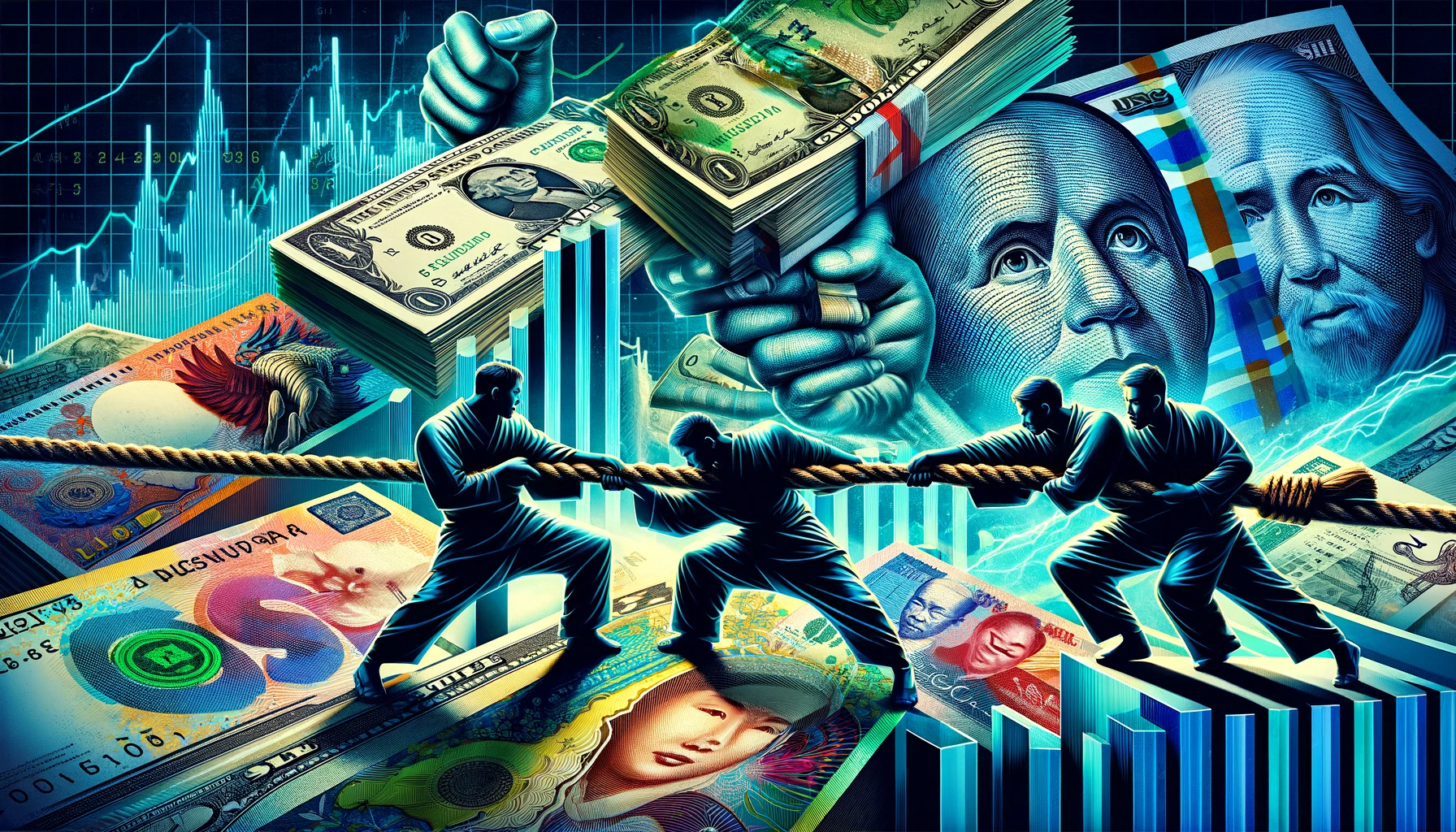Asia’s central banks are getting ready for a bumpy ride thanks to the mighty US dollar deciding to fight them back with all of its remaining strength. With fewer US interest rate cuts on the horizon this year, currencies across the continent are feeling the squeeze, and let me tell you, it’s not pretty. From the yen to the renminbi and beyond, everyone’s feeling the heat.
A Tough Balancing Act
In recent days, the big players like Japan, China, and South Korea have been busy talking a big game about their currency stability, even as said currencies slide against the dollar due to the yawning gap between the US’s high interest rates and their own much lower ones.
Investors looking for better returns have shifted their cash into US assets, sending the yen tumbling to a 34-year low, slipping past ¥154 to the dollar. Meanwhile, the yuan has slipped below China’s daily reference rate, and the won is weaker than it’s been since November last year.
The currency shake-up has prompted a lot of policy moves.
A particularly interesting one was a joint statement from the US, Japan, and South Korea last Thursday that aired “serious concerns” about the plunging yen and won. But let’s be real. Despite the drama, the chance of these countries actually stepping in to stop the slide? Pretty slim, according to the experts.

The Currency Rollercoaster
At the beginning of 2023, there was hope that US rate cuts might ease the strain. Fast forward to second quarter, and a stubborn streak of high US inflation coupled with strong economic performance has pretty much trashed those plans. Central bankers have tried to talk up their game, hinting at what they might do to steady the markets without actually committing to anything solid.
Over in Tokyo, traders are calling the US-Japan-South Korea joint statement a low-cost move—basically a way to spook the markets into calming down without the hassle of real intervention. Meanwhile, Bank of Japan Governor Kazuo Ueda has hinted that they might just hike rates if the yen’s slide gets too out of hand, a rare and bold move from the usually cautious central bank.
As for China, they’re battling with how much leeway to give the renminbi amid domestic economic troubles and complaints from trading partners about cheap Chinese exports. The People’s Bank of China has been busy trying to fend off bets that the renminbi will weaken further due to the low Chinese interest rates compared to the US’s higher ones.
Global Dynamics and the Dollar’s Domination
Just when you think it couldn’t get more entertaining, the US dollar has bulldozed through, hitting a new high of 106.27 on the DXY charts this month. Thanks to escalating tensions between Iran and Israel, global investors are running scared, throwing their money into what they see as safe havens; the US dollar, gold, the Japanese yen, and the Swiss franc.
But it’s not just that, you guys. The BRICS countries are still very much pushing forward with plans to cut down on their dollar dependency by switching to cryptocurrencies for international trade. This is part of a effort to shift away from the US dollar and promote local currencies, something they’ve been keen on as they try to change our global economy’s entire order.
Meanwhile, the Nigerian naira is having a moment, surging 12% against the dollar this month alone, which is a pretty big deal. It’s been dubbed the best-performing currency this April, apart from the US dollar. After a rocky start to the year, the naira’s value has shot up from NGN1,800 per dollar in early March to NGN1,195 by press time.
So yeah. The US dollar’s still king. For now.
From Zero to Web3 Pro: Your 90-Day Career Launch Plan
